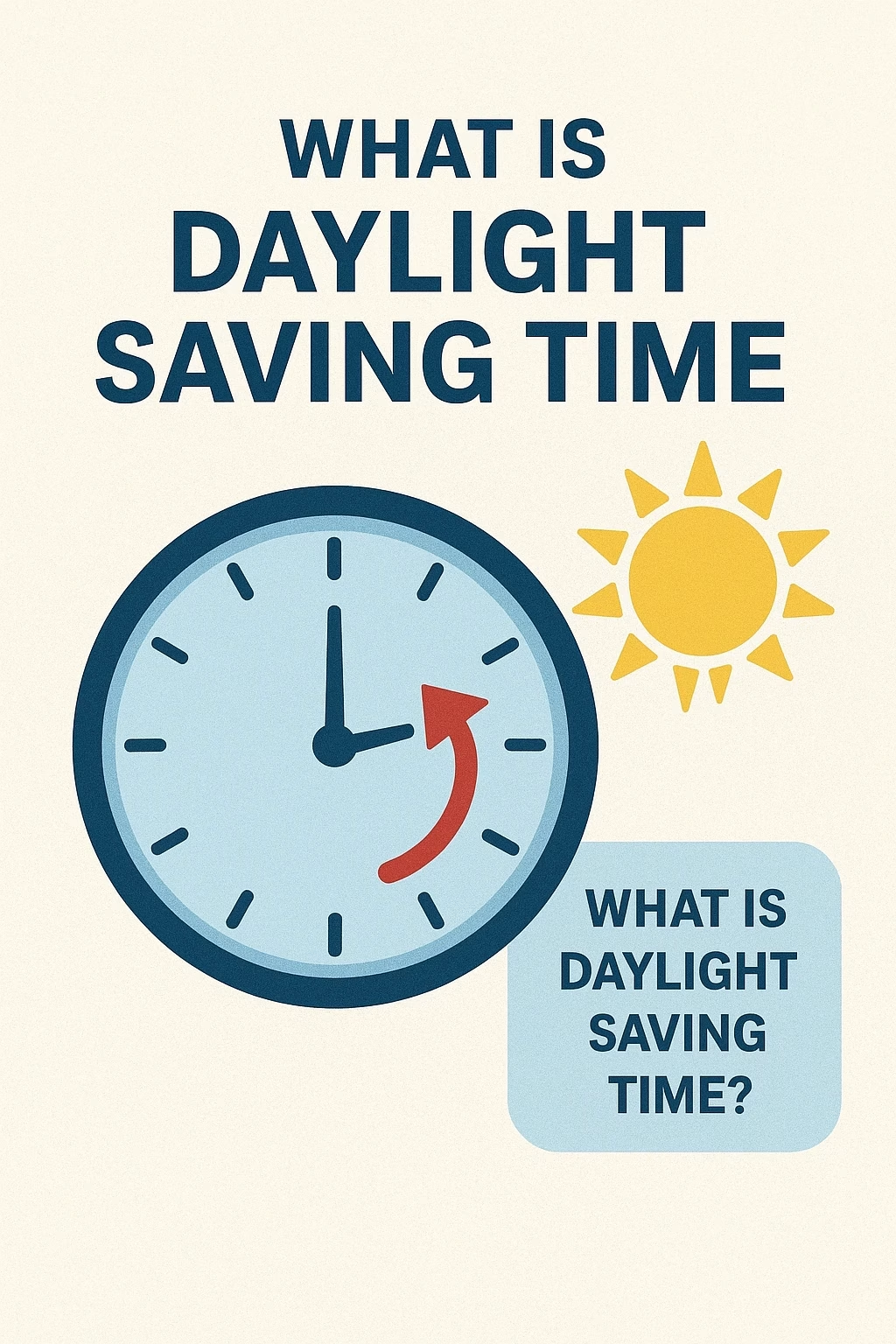Daylight Saving Time (DST) is the practice of advancing clocks by one hour during the warmer months in order to extend evening daylight, and then reverting to standard time during the colder months. The idea is that by “springing forward” in spring, people get more daylight in the evening hours, and by “falling back” in autumn, mornings are lighter sooner. Time and Date
Although commonly referred to as “daylight savings time,” the correct term is “daylight saving time” (without the “s”) — since it is the saving of daylight, not multiple savings. Time and Date
DST is observed in many—but not all—countries around the world. The exact start and end dates vary by jurisdiction.
Why Do We Have DST?
Historical Roots
- The concept of moving clocks dates back to at least the early 20th century. For example, the first recorded large‐scale experiment was in Port Arthur, Ontario (now Thunder Bay) in 1908. Time and Date
- During World War I, Germany implemented annual clock-shifts in 1916 to conserve energy, followed by other nations including the United States. Time and Date
- In the U.S., the practice was standardized with the Uniform Time Act of 1966, though states can opt out. Wikipedia
Intended Benefits
Proponents of DST argue the following benefits:
- More daylight in the evening can encourage outdoor activities, reduce use of electric lighting, and boost retail/tourism. Jagranjosh.com
- Some studies suggest fewer traffic accidents since more travel happens during daylight hours. Time and Date
Criticisms & Realities
However, the benefits are contested:
- Many studies show minimal or no energy savings; some even show increased consumption. Time and Date
- Changing clocks twice a year can disrupt sleep patterns, increase health risks (e.g., heart attacks, mood disorders) and cause logistic/travel confusion. The Economic Times
- Some regions have opted out entirely or considered abolishing the time change. TIME
When Does DST End in 2025?
United States & Canada
- In the U.S. (and most of Canada) in 2025:
- DST begins on Sunday, March 9, 2025, at 2:00 a.m. local time. Jagranjosh.com
- DST ends on Sunday, November 2, 2025, at 2:00 a.m. local time (clocks go back one hour). The Economic Times
- That means at 2 a.m. local time on November 2, the clocks are set back to 1 a.m., effectively giving an extra hour of sleep. mint
Europe
In Europe and most of the European Union/UK region
- DST ends on Sunday, October 26, 2025, at 1:00 a.m. UTC (or local equivalent) in many places. Time and Date
For example, countries such as Albania, Andorra, Åland Islands list Sunday, March 30 as start and Sunday, October 26 as end.
How the Change Works & Practical Considerations
The Shift
- When DST begins, clocks are moved forward by 1 hour (e.g., 2 a.m. → 3 a.m.), meaning you lose one hour of sleep that night.
- When DST ends, clocks are moved backward by 1 hour (e.g., 2 a.m. → 1 a.m.), giving you an extra hour of sleep. Time and Date
Why 2:00 a.m.?
Using the early morning hours (around 2:00 a.m.) reduces disruption: few people are up, fewer trains/flights are active, and date-change issues are minimized.
What to Prepare For
- Manual clocks and watches need adjusting—the change may not automatically apply.
- Check automatic time-setting devices (phones, smart home devices) to ensure they update correctly. Many do, but verify.
- Consider making minor adjustments to sleep schedule (e.g., going to bed 10–15 minutes earlier in the days around the switch) to reduce disruption. Time and Date
- In regions where children travel to school, workers commute, or shift-work is involved, earlier sunsets (after the end of DST) can affect visibility and activity timing.
The transition out of DST in 2025 is more than just setting a clock back an hour. It involves effects on sleep, daily routines, business operations, global coordination, and health. Whether you love the extra evening daylight of DST, or loathe the bi-annual clock change, understanding the times and impacts helps you plan.
